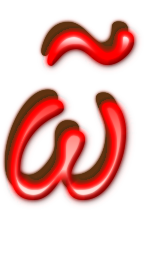Fixing the Ibycus Keyboard Layout icon detection issue
This is an issue that rarely happens for reasons still unknown to me; it seems to appear the first time Ibycus Keyboard Layout is activated after a program upgrade.
What actually happens is that AncientGreek cannot detect its own icon (existing on the Main Toolbar) and subsequently cannot update it in order to reflect the layout's status. The result is that the "I" icon never changes, rendering Ibycus Keyboard Layout unusable.
The fix is a very simple one: the icon has to be deleted from the Main Toolbar, so that will get added (and detected) when the program runs again.
The instructions bellow refer to Windows 7 using English environment, but they are easy to follow on any Operating System and locale.
Please perform the following actions to fix the problem:
1. Close the program. Make sure to close the "Quick Start" icon too, if it's active.
2. Run the program again, but do not try to use "Ibycus Keyboard Layout" just yet.
![]()
3. Right click on the Main Toolbar and select "Customize Toolbar..." on the pop up menu.
![]()
4. Make sure that the selected "Toolbar" is "Standard" and scroll down to the end of the "Toolbar Content" list until you find the "Current state of the Ibycus keyboard layout" entry and click on it to select it.
![]()
5. Having the "Current state of the Ibycus keyboard layout" entry of the "Toolbar Conent" list selected, click on the "Modify" button and select "Delete" on the pop up menu.
![]()
6. Finally click the "OK" button to close the dialog.
7. Close the program. Make sure to close the "Quick Start" icon too, if it's active.
8. When you run the program again, you will be able to use "Ibycus Keyboard Layout" again.
